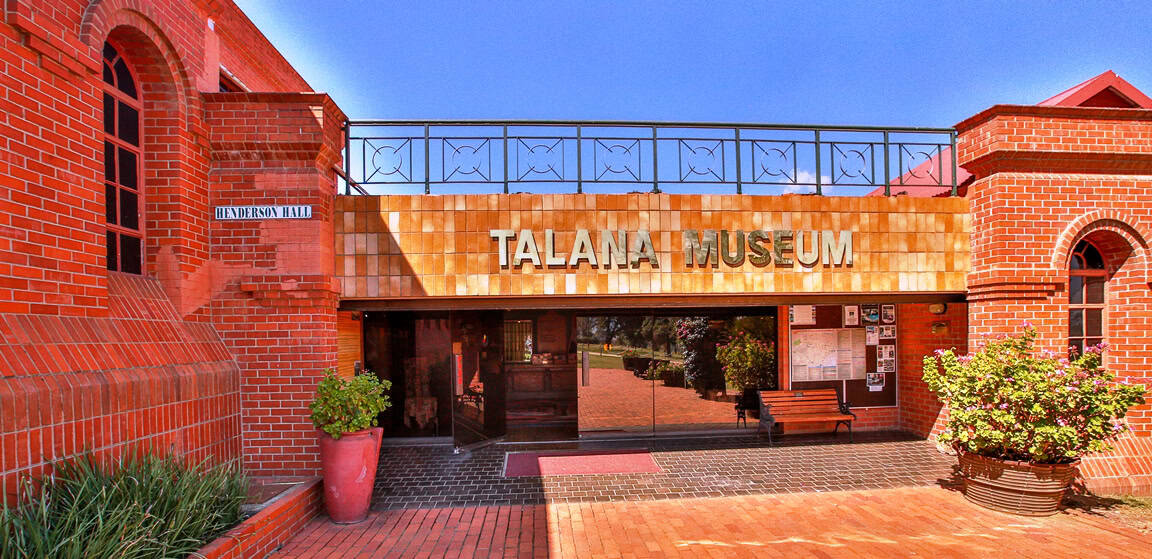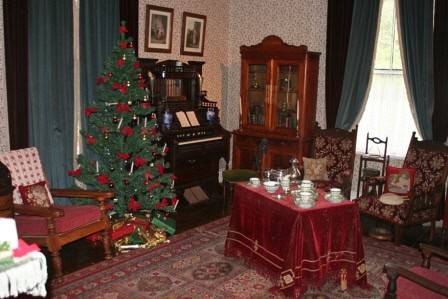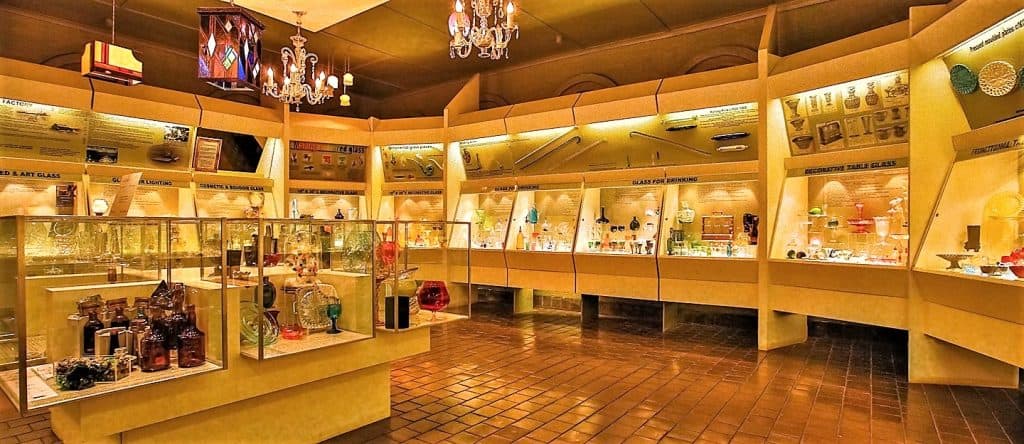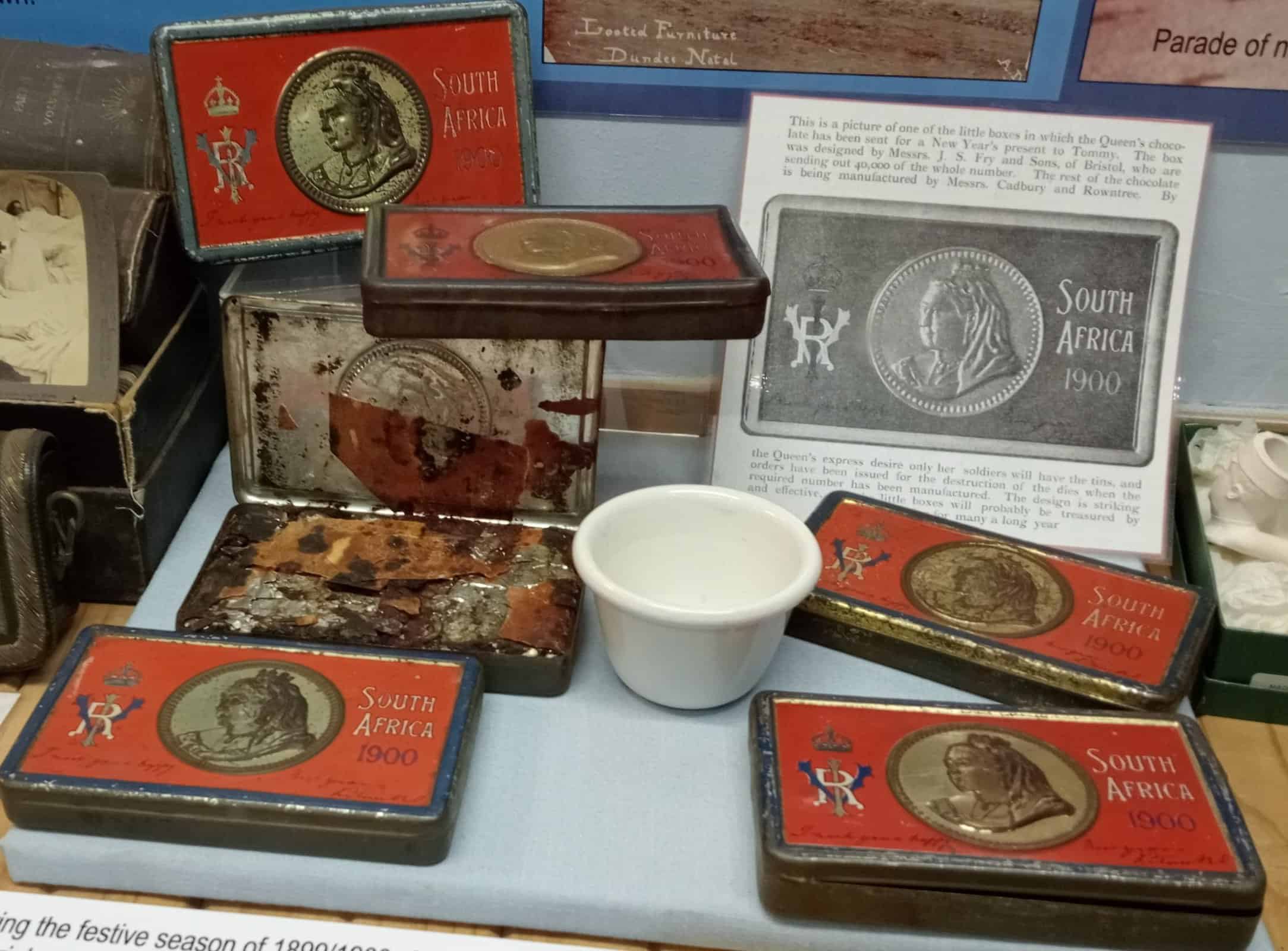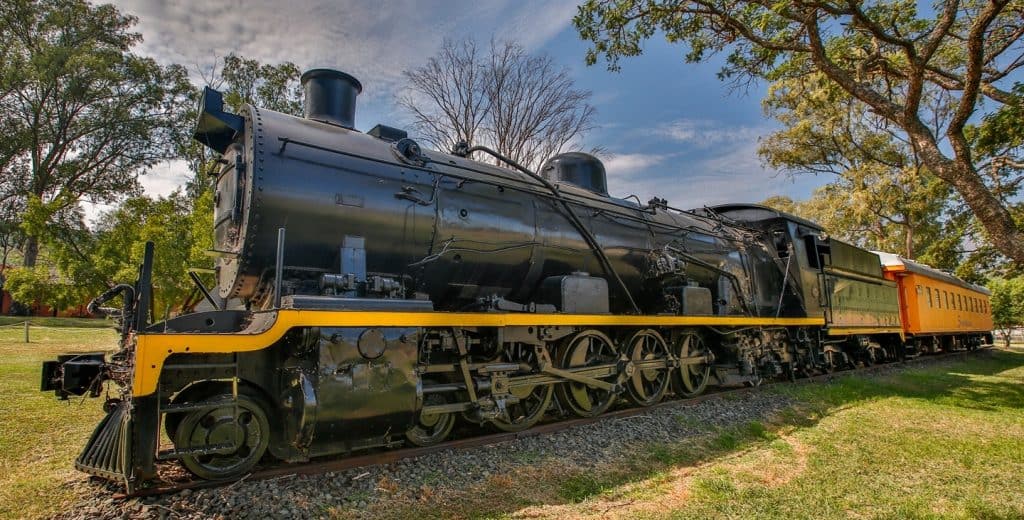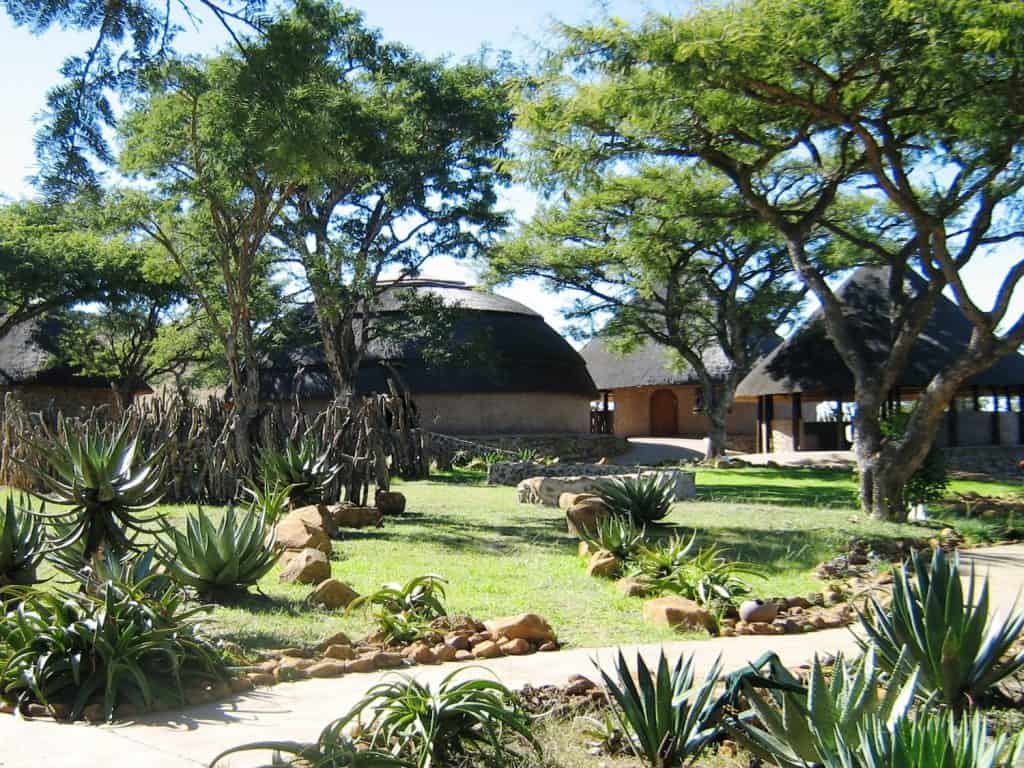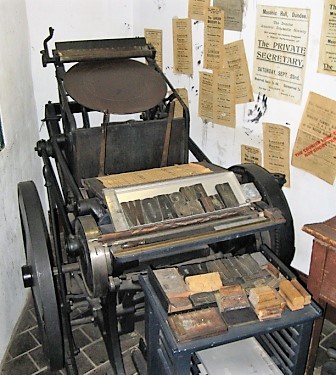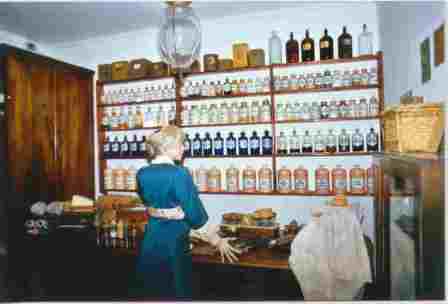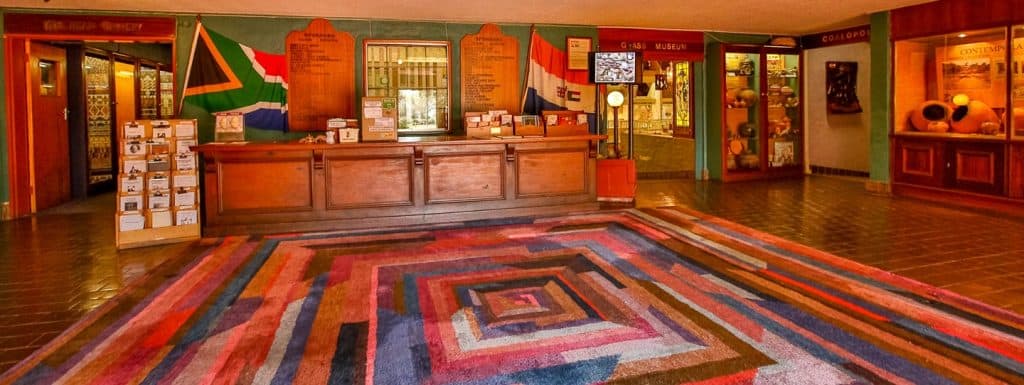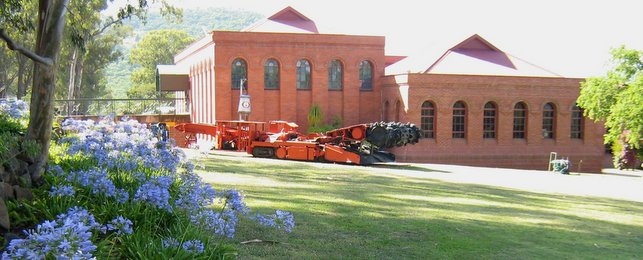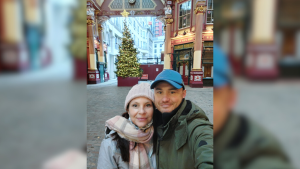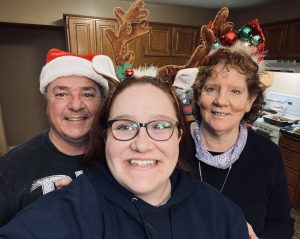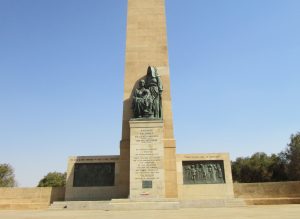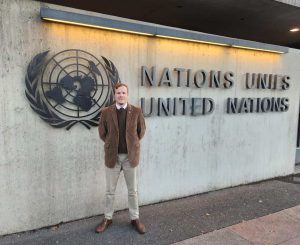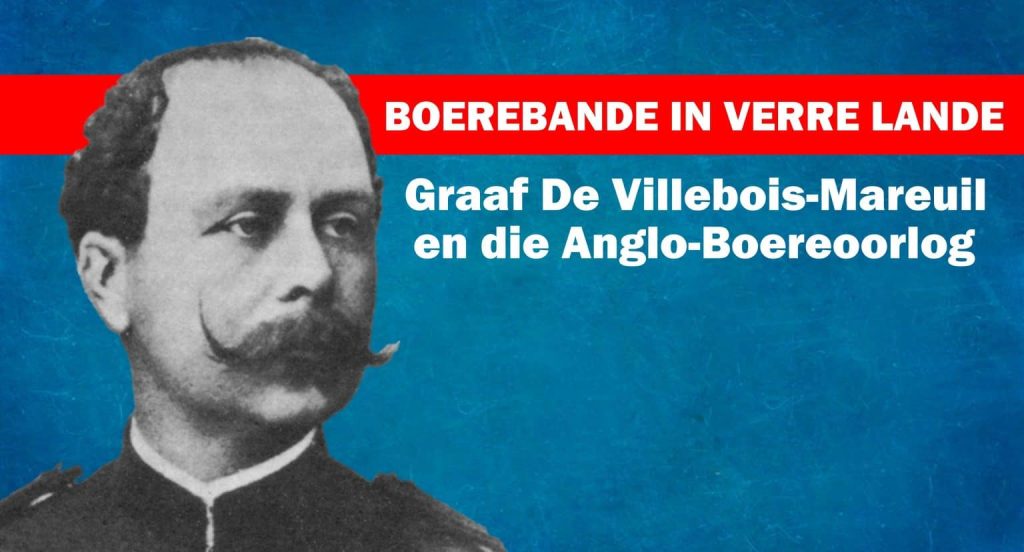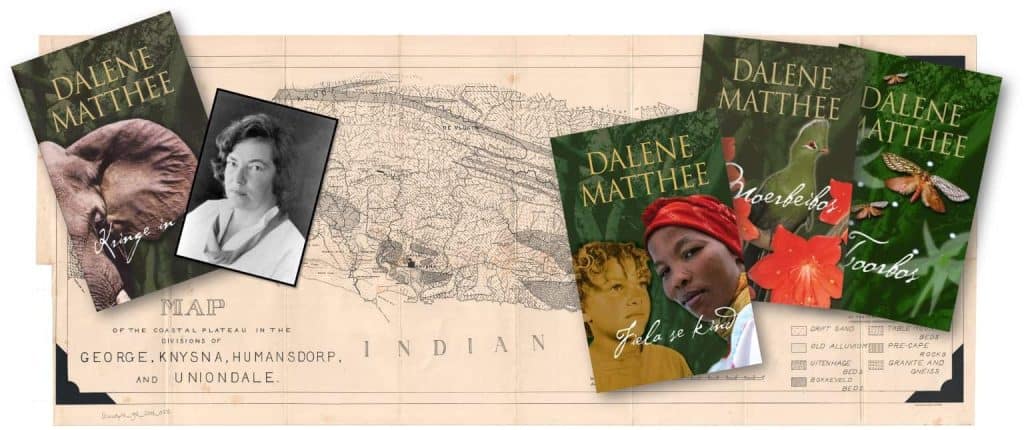Heritage highlights 3 – Talana Museum, Battlefield and Heritage Park
By Alana Bailey
In AfriForum’s Heritage Highlights series, we shed light on heritage landmarks in the country where communities step in themselves to preserve our unique cultural and historical legacy.
In this instalment it is our huge privilege to discover more about Talana Museum from Pamela McFadden, retired curator and trustee of the museum.
Alana: Thank you very much for your participation in Heritage highlights, Pam. Please tell us more about yourself.
Pam: I was a history teacher at Dundee High School from 1980 to 1982, but as soon as I arrived in Dundee Ialso joined the museum committee and undertook field work and research in the area. I resigned from teaching and was appointed as senior professional officer at the museum at the beginning of 1983. There was an elderly man, Fred Jones, who held the post of curator, but he was actually more of a caretaker and receptionist. The museum was housed in two classrooms of an old school. I relocated the museum to the site at Talana in March 1983, so that we could begin the huge job of developing the Talana Museum as you see it today. Once Mr Jones retired in 1984, I became the curator – a position which I held until the end of November 2022. The recent curator, Siya Africa, spent five years at the museum as a museum assistant and got to know the inner workings of the museum well.
My job description included developing and building a museum on the Talana site, collecting items, doing research, raising the funds to build and develop the museum, plus promoting the museum within the museum community and also to the wider local, national and international community. One of the ways in which this was done, was to establish the Battlefields Route, with the aim of promoting the military history of the entire region, including eight local municipal areas and five district municipalities. This route which I started in 1989, is one of the longest surviving private tourism marketing bodies in the country. Talana Museum is the centre of this route.
Alana: Where is the museum?
Pam: Talana Museum is situated on the outskirts of Dundee, KwaZulu-Natal at the base of Talana Hill. It is on the original farm of Peter Smith, one of the founders of the town of Dundee. He came from a small village in Scotland close to the city of Dundee – hence the name of his farm and the town. The museum includes part of the Talana battlefield. It was the first battle of the Anglo Boer War of 1899-1902.
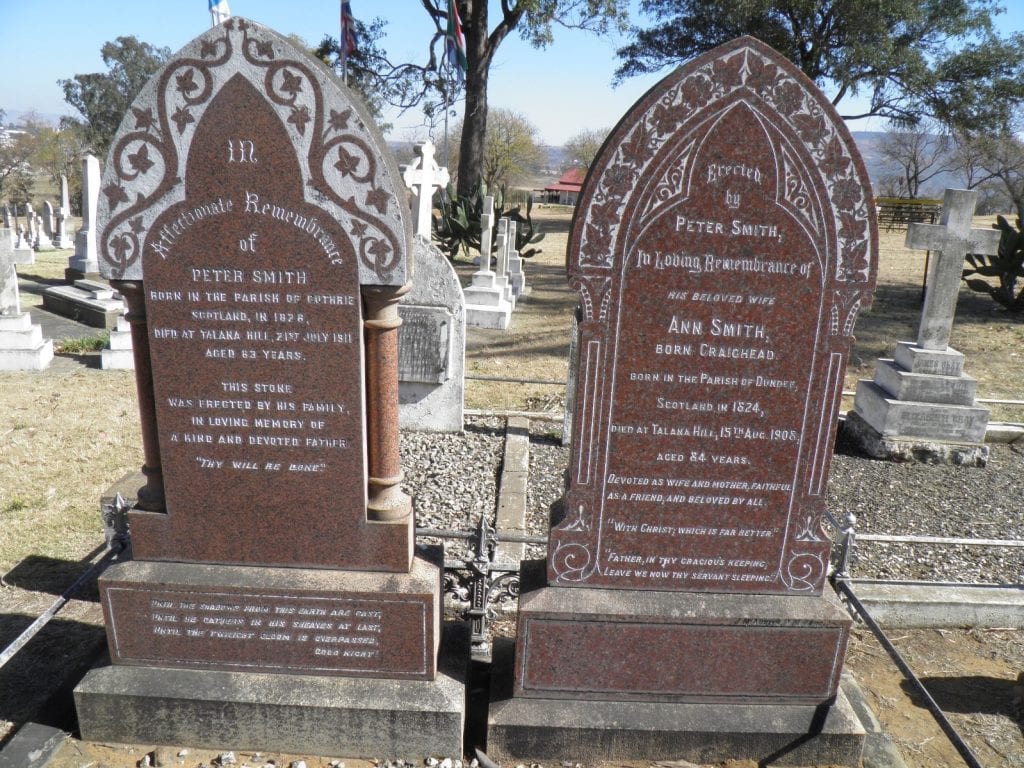
Alana: When was the museum established?
Pam: As a result of the centenary celebration of the Anglo Zulu War in 1979 it was decided that there should be a museum in Dundee that would reflect the history of the town and vicinity. Dundee was set to celebrate its centenary in 1982 and this occasion was considered to be the ideal time to open such a museum. A committee comprising historians and other dedicated, knowledgeable locals was therefore established and ideas for the museum considered.
The right place for the museum had to be found. One Sunday afternoon early in 1981, some of the committee members were cleaning the cemetery at the base of Talana Hill, when George Buntting, one of the founding committee members, looked about and said: “This would be the perfect place for the museum. It is where everything started.” This remark initiated negotiations with the then owners of the property, who agreed to sell the first 20 hectares.
The original agreement in 1981 with the local town council was that they would contribute 20% of the purchase price of the property, the province of Natal 80% and the museum committee would raise all funds required to build and develop the museum.
This committee functioned until a change in provincial legislation, when it had to be transformed into a board of trustees in 1995. The board determines museum policy, and is responsible for collection and preservation, as well as raising funds to keep the museum operational. All trustees are volunteers and receive no remuneration. The town council pays the salaries of ten staff members and the board contracts in staff with special skills, as well as to operate the museum over weekends and public holidays. The Trustees also manage volunteers who assist with research, digitisation of the extensive archival collections and other skilled requirements to ensure that the highest standards are maintained regarding the exhibits, maintenance and preservation of the collections. The entire museum collection is in a private trust managed by the board of trustees.
Alana: What does the museum terrain include?
Pam: Over the years, more of the original farm has been purchased to ensure that all the heritage sites relating to the Battle of Talana are incorporated into the museum site. It now covers 310 hectares. Dundee is also where the first organised mining for the extraction of coal in South Africa took place. The town was the core of the richest coal producing area in the country and was nicknamed “Coalopolis”. The Dundee Coal Company was even listed on the London Stock Exchange in 1889.
The original Smith farm buildings, the homestead of Peter and his son William Craighead, the cooling room, barns, milkshed, coach house and carpentry shop, as well as the family and the military cemetery from the Battle of Talana, formed the nucleus of the start of the museum.
Most of the original buildings were renovated for the centenary in 1982. This was done with the financial help of descendants of the founders of the town, local farmers, as well as local and national businesses such as Corobric, Yskor and Consul Glass, that have ties to the town.
Today, exhibits are housed in 22 buildings on the property. This includes the abovementioned original farm buildings, as well as reconstructed buildings from the mining industry and others from the area. Seven of these were moved here from Durnacol Mine. The reconstructed miner’s cottage (circa 1913) of the Ballengeich Mine, currently serves as a restaurant here. It is known as Miners Rest.
An additional sixteen buildings in the traditional Zulu village are used as bed and breakfast accommodation on site.
Exhibits also include more than 25 wagons, agricultural equipment, mining equipment, the glass museum, exhibits on the history and development of Dundee, large military exhibits, traditional Zulu cultural items, a locomotive that was used to transport coal on the Natal mines, and a railway carriage originally used by the Natal coal mines as a conference room on wheels and VIP lounge for guests.
The Satyagraha Centre tells the story of the Indians in KwaZulu-Natal and their settlement in this area, as well as the involvement of Mahatma Gandhi here. The courthouse in which he was tried in 1908 and again in 1913 is outside the premises in the centre of town, but also forms part of the museum.
The extensive grounds have been landscaped, trees and plants have all been identified with their botanical, English, Afrikaans and Zulu names, as well their uses in traditional medicine. To date, 113 bird species have been identified on site.
A walking trail up Talana Hill, in the footsteps of the British soldiers, leads to the Boers’ sangars and the British fort on top. A short walk from the buildings takes visitors to the spot where Lieutenant-General Sir William Symons, the officer in command of the British forces, was mortally wounded. He died in the British camp the day after the battle and was buried in the grounds of the Anglican church in Dundee.
Alana: How many visitors do you receive per annum?
Pam: Before COVID-19 we averaged between 30 000 and 35 000 a year. However, the pandemic has had serious consequences, and it is taking considerable effort to bring back our visitors. Presently we are averaging between 1 000 and 1 500 people a month.
Although all exhibits are in English, each exhibit has an introductory panel in English, Afrikaans, Zulu, French and German. Our printed visitor guides are also available in Afrikaans and Zulu. Specialist guides available here can speak English, Afrikaans and Zulu, and we also have access to French- and German-speaking guides. They can be engaged for visits to the nearby battlefields, the vicinity where they can experience Zulu culture and traditions, the Maria Ratschitz Mission in the Wasbank Valley, a walking tour along the Dundee Heritage Trail and much more.
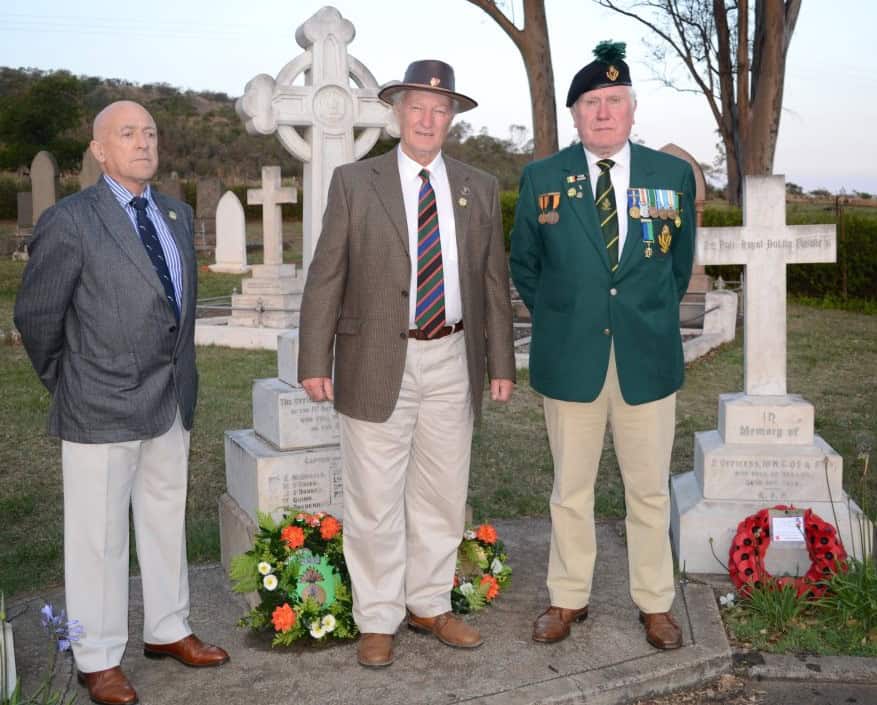
Alana: What usually surprises or excites people most when they visit the museum?
Pam: Many of our visitors are interested in the military history, coal mining or have family connections to the Smiths and other early families of the town. Museum researchers and staff constantly answer questions or retrieve information in the archives for visitors wanting to know about their family’s history in the town.
Visitors are also fascinated by the story of the glass factory and the diversity of the glass exhibition, as well as the wonderful collection of beadwork, which of course also includes glass beads. The bead gallery displays beadwork of European and Indian origin, as well as of Zulu, Xhosa, Fingo and other African tribes.
The coal mining exhibits and the mining machinery particularly fascinate school groups.
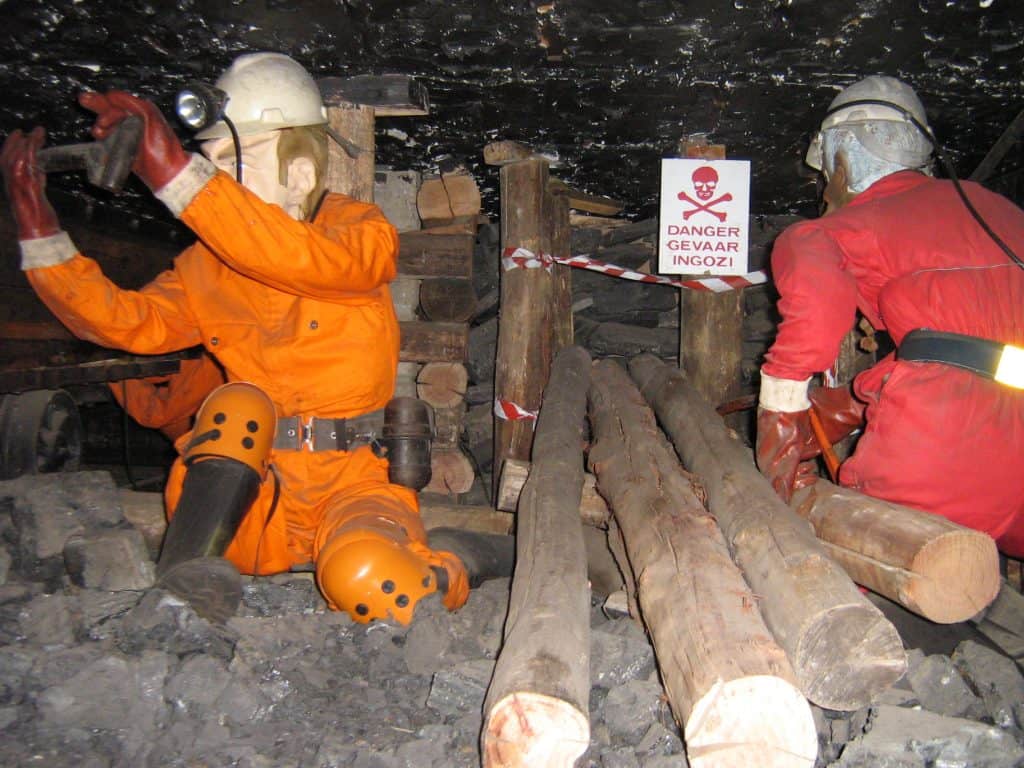
Visitors always comment on the neatness of the grounds, the space, the quality of the exhibits and how much there is to see. They often underestimate the amount of time they need to explore everything properly.
Alana: Tell us more about your outreach to school groups please?
Pam: We regard school children as the future of our country and as such they need to learn about and understand the heritage of their local area and then the wider regions. In past years figures reflected that 35% of our visitors have been school children. We are positively working to increase the numbers of school groups that visit the museum. With the re-introduction of History as a subject in the school curriculum, the museum has got involved with giving talks and guided walks through the museum and along the Heritage Trail in the town that link in with the curriculum.
To support and encourage local schools to visit the museum regularly, the board of trustees offers a programme of six free school weeks per year. Schools have to book in advance and then get free access with a registered specialist guide for part of their visit. Schools are encouraged to come on more than one visit and to explore sections of the museum at a time, and not to try to do it all in a single visit, as there is just too much to see and absorb. They are welcome to spend the whole day at the museum and to bring a picnic lunch.
Alana: What do you offer for outdoor enthusiasts?
Pam: There is a very good restaurant on site, and braai areas are available. We welcome visitors who want to have a picnic – tables and seats can be found all over the premises.
The walking trail up Talana Hill attracts many visitors, especially locals who bring their dogs for early Saturday morning walks.
Alana: You describe the museum as “the greatest recycler”. Why?
Pam: Museums are great recyclers. Everything that is donated is being recycled. Every item has been previously used and now is getting a second lease of life in the museum. From the very smallest to the extremely large mechanical items – we collect them all. If we had not, they would have been discarded and that piece of the history of our town or part of a family story would have disappeared.
For example, we have relocated eight buildings to the museum that would otherwise have been demolished. From many other old buildings we have collected furniture and building material that we reuse. Electrical wiring from mines closing down has been collected and used by crafters to fashion new curio items that were sold in the museum.
Alana: Tell us about a recent highlight at the museum?
Pam: Our heritage fashion show of 11 May 2024 was a huge success. During the show, more than 60 items of clothing dating from 1890 to 1980 were on display. With the help of 25 models and 16 choreographers, we demonstrated how people dressed in years gone by and how delicate these items are. We also told the stories of the original owners and the people who wore these clothes.
Alana: Do you host any annual events?
Pam: There are several annual events that take place here, for example the Biggarsberg Cycle Challenge. It is a road cycle race of 34 and 75 km respectively that goes through Dundee and the surrounding mountains. This year it will take place on 16 June.
The annual Talana Live weekend commemorates the Battle of Talana and takes place on the weekend closest to October 20, the date on which the battle took place. The programme includes the evening ghost walk, battle demonstration, historical talks, on-site market and tours. The opportunity to dress up in period costumes and have a photo taken with the “soldiers” is always very popular.
Market days and exhibitions of vintage cars are also held.
Alana: Which challenges do you face?
Pam: To find volunteers prepared to donate their time and skills to assist the museum, as well as to build a healthy reserve trust fund so that the interest earned will support some of the monthly financial expenditure.
Alana: What is on your wish list?
Pam: To ensure that current volunteers and sponsors realise just how valuable they are to the museum, then to find even more volunteers and sponsors (either financially, or as donors of goods and services) who share our vision for the museum to get involved.
Alana: If people have historical objects or documents they would like to donate to the museum, who should they contact?
Pam: Donations should be items that will help to tell the history of our region. Almost anything is welcome and prospective donors can contact the curator.
Alana: How can people get involved at the museum?
Pam: They can volunteer to do part-time research at the museum, digitise historical documents, translate documents from languages they understand into English and Afrikaans, help to clean and refurbish exhibits, give talks to schools and interest groups, serve on committees to organise events at the museum, as well as write articles and promotional material for the museum. Skills they can offer, such as sewing, mending, painting, designing, building renovation, repairing machinery, computer skills, or social media knowledge, will be helpful. The more volunteers that are involved, the more the word of mouth spreads.
We are currently working on a project to translate and transcribe the unpublished diaries of the Anglo Boer War in our archives. We would like to publish these as part of the 125th anniversary of the war that will start in October this year.
Alana: Finally, what advice do you have for anyone who would like to adopt or restore a heritage landmark?
Pam: Go for it – it is one way to protect and preserve our history and heritage.
I am currently assisting a community group in Vryheid who have just had the Old Raadsaal and prison cells handed over to them by the local municipality, as the latter no longer wishes to maintain these buildings as a museum.
My advice is to get a committed and enthusiastic volunteer committee, with a chairman that has the necessary passion and drive for the project and can get others enthusiastic and willing to support it. It will require historians, a lawyer, accountant, local business representatives and individuals.
The stakeholders should know their history, build a solid reputation and trust. They should honour their commitments, no matter the cost, and get lots of local volunteers involved. Volunteers should be made to feel wanted and that they have something to give back to their community that is valued.
Alana: Pam, I think this is what you succeed in doing brilliantly! We thank you for years of loving service to the museum, as well as your region’s history and heritage. AfriForum wishes you everything of the best and would like to stay involved where possible.
Photos: Pamela (Pam) McFadden
Contact details
Telephone number: 034-212-2654
email address: info@talana.co.za
Website: www.talana.co.za
Facebook: talanamuseum
X: talanamuseum



